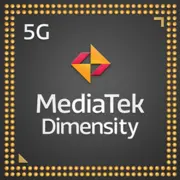MediaTek Dimensity 9000

MediaTek Dimensity 9000: Power and Efficiency in a Compact Format
A professional yet friendly review of the flagship processor for smartphones
Introduction
The MediaTek Dimensity 9000 is the company’s ambitious answer to the demands of the high-performance mobile devices market. Released in late 2021, this chipset quickly captured attention thanks to its cutting-edge manufacturing process, robust architecture, and energy efficiency. In this article, we will explore what sets the Dimensity 9000 apart from its competitors, how it performs in real-world scenarios, and who should pay attention to it.
Architecture and Manufacturing Process: 4 nm and a Performance Breakthrough
CPU: 8 cores and an advanced layout
The Dimensity 9000 is built on a heterogeneous architecture consisting of 8 cores, divided into three clusters:
- 1× Cortex-X2 at 3.05 GHz—for resource-intensive tasks (gaming, rendering).
- 3× Cortex-A710 at 2.85 GHz—a balance between performance and energy consumption.
- 4× Cortex-A510 at 1.8 GHz—for background processes and basic applications.
A 1 MB L2 cache and an 8 MB shared L3 cache enhance data processing by reducing latency. The 4 nm process (TSMC N4) ensures a high transistor density and lowers heat generation.
GPU: Mali-G710 MP10 — next-level graphics
The Mali-G710 MP10 GPU supports:
- Ray Tracing (hardware-accelerated ray tracing).
- Frequencies up to 850 MHz.
- Displays with a 180 Hz refresh rate (at FHD+ resolution).
This makes the Dimensity 9000 one of the first mobile chips to support technologies previously available only in PCs.
Real-World Performance
Gaming: Smoothness and Detail
- Genshin Impact: stable 60 FPS at high settings (with active cooling in the smartphone).
- PUBG Mobile: HDR graphics support and 90 FPS.
- "Super Resolution" Mode: AI algorithms enhance image detail without stressing the GPU.
Note: Due to its 4W TDP, long gaming sessions may cause heating; thus, smartphones with this chip often come equipped with liquid cooling systems.
Multimedia and AI
- 8K@30fps video encoding and 8K@60fps decoding.
- The MediaTek APU 590 AI block accelerates tasks in applications: object recognition in the camera, automatic photo retouching, battery charge optimization.
- Power consumption: in everyday scenarios (social media, streaming video) the processor consumes 15–20% less energy than the Snapdragon 888.
Integrated Modules: Future Connectivity
Modem and 5G
- The MediaTek M80 modem supports 5G SA/NSA in Sub-6 GHz bands.
- Download speeds of up to 7 Gbps and upload speeds of up to 3.7 Gbps.
- Compatibility with 4G LTE Cat.24 (speeds up to 2.5 Gbps).
Wi-Fi, Bluetooth, and Satellites
- Wi-Fi 6E supporting three bands (2.4/5/6 GHz).
- Bluetooth 5.3 with enhanced audio quality (LE Audio).
- Global navigation: GPS, GLONASS, Galileo, BeiDou, QZSS.
Comparison with Competitors
Dimensity 9000 vs Snapdragon 8 Gen 1
- Manufacturing process: 4 nm TSMC for MediaTek vs. 4 nm Samsung for Snapdragon — an advantage in energy efficiency.
- Graphics: Mali-G710 MP10 vs Adreno 730. In 3DMark Wild Life tests, Snapdragon leads by 10-15%, but Dimensity runs cooler.
- AnTuTu 10: 1.1 million points vs 1.05 million for Snapdragon 8 Gen 1.
Dimensity 9000 vs Apple A15 Bionic
- Single-threaded performance: A15 leads (Geekbench 6 Single Core — ~2000), but in multi-threaded tasks, Dimensity shows comparable results.
- Power consumption: A15 is more efficient but only works within the iOS ecosystem.
Use Cases
Gaming
Smartphones powered by Dimensity 9000 (e.g., Vivo X80 Pro) are well-suited for mobile gamers but require models with advanced cooling.
Photography and Video
- Supports cameras up to 320 MP (Samsung ISOCELL sensors).
- 8K HDR video with real-time noise reduction.
- AI stabilization for filming in motion.
Everyday Tasks
Fast multitasking, a smooth interface, and long battery life (in devices with a capacity of 4500 mAh).
Pros and Cons
Strengths
- High performance in gaming and multimedia.
- Support for modern communication standards.
- Energy efficiency thanks to the 4 nm manufacturing process.
Weaknesses
- Lack of support for mmWave 5G (only relevant for the USA).
- GPU slightly lags behind top solutions from Qualcomm.
Practical Tips for Choosing a Smartphone
1. Cooling: look for models with vapor chambers or graphite thermal pads.
2. Battery: ideally, 5000 mAh with support for fast charging from 65W.
3. Display: AMOLED with a 120 Hz refresh rate to maximize GPU capabilities.
4. Camera: devices with Sony IMX766 or Samsung GN5 sensors will better utilize the chip's potential.
Typical devices: flagship models in the mid-price range (Xiaomi, Vivo, Oppo) and premium models.
Final Verdict: Who Is the Dimensity 9000 Suitable For?
This processor is an ideal choice for:
- Gamers who value a balance between performance and price.
- Photography enthusiasts looking for advanced photo and video processing.
- Users seeking flagship performance without overpaying for a brand.
Key benefits:
- Future-proofing (5G, Wi-Fi 6E, 8K).
- Long battery life thanks to an optimized manufacturing process.
- Versatility for any use case.
The MediaTek Dimensity 9000 proves that flagship technology can be accessible. It is not just a processor but a foundation for smartphones that don't yield to top models while offering a better price-to-performance ratio.
Basic
GPU Specifications
Connectivity
Memory Specifications
Miscellaneous
Benchmarks
Compared to Other SoC
Share in social media
Or Link To Us
<a href="https://cputronic.com/soc/mediatek-dimensity-9000" target="_blank">MediaTek Dimensity 9000</a>